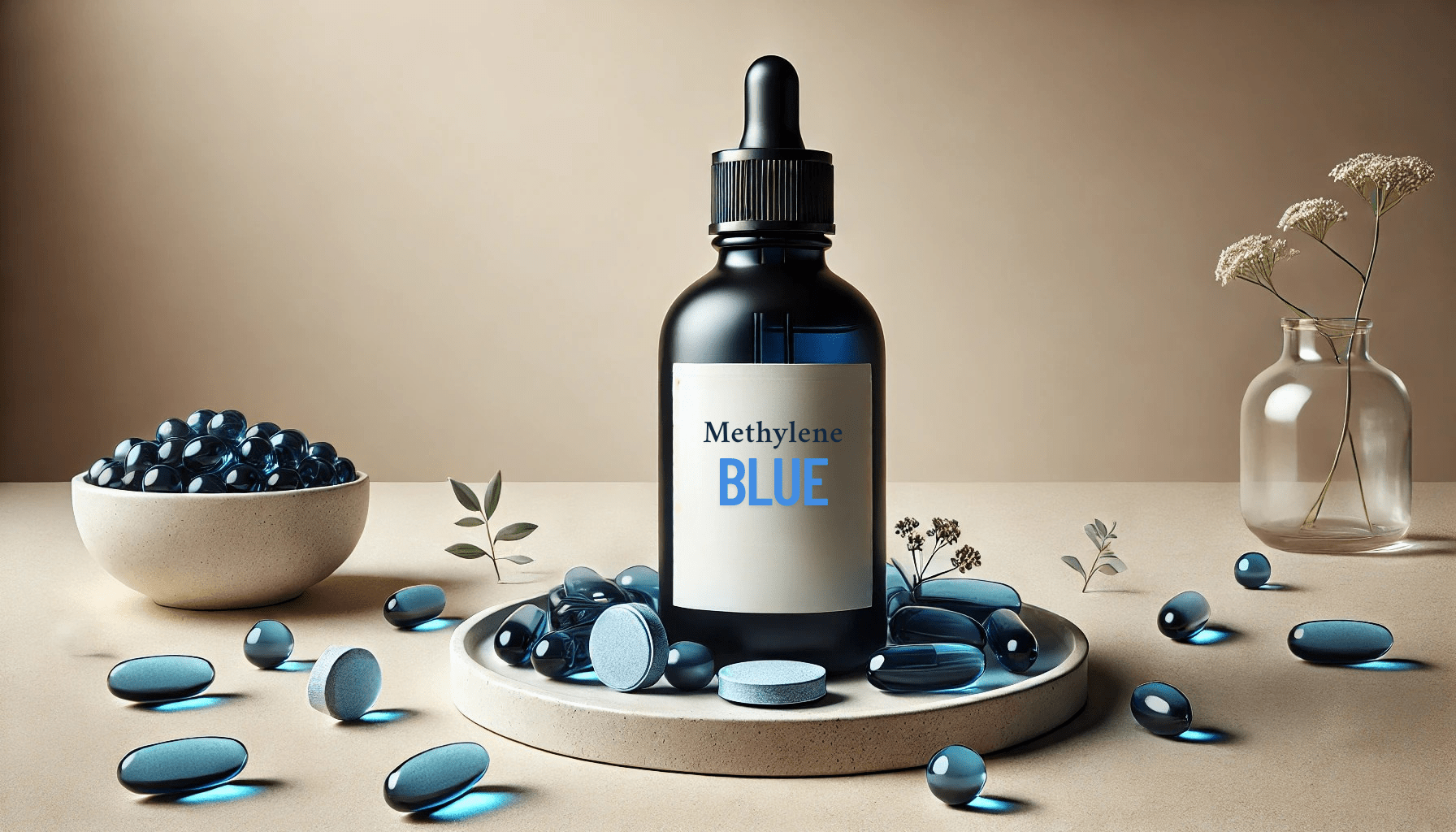Are you concerned about the effects of aging on your energy, strength, or overall health? GlyNAC, a powerful combination of two amino acids, is receiving increasing attention from researchers and health enthusiasts alike for its remarkable effects on aging, cellular health, and energy production. Unlike many supplements with limited research behind them, GlyNAC has been the subject of impressive clinical trials that show it can address multiple aspects of aging simultaneously. But what exactly is GlyNAC, how does it work, and could it benefit you? In this comprehensive guide, we'll explore the science behind GlyNAC, its potential benefits, proper dosing, safety considerations, and everything else you need to know about this promising supplement.
What Is GlyNAC?
GlyNAC is a nutritional supplement that combines two important amino acids: glycine and N-acetylcysteine (NAC). While both compounds have benefits when used separately, research suggests they work synergistically when taken together, creating effects greater than either one alone.
The power of GlyNAC comes from its ability to boost glutathione production in your body. Glutathione is often called the body's "master antioxidant" because it plays a crucial role in neutralizing harmful free radicals, supporting detoxification, and protecting cells from damage. As we age, glutathione levels naturally decline, which contributes to many age-related health issues.
Glycine and NAC are both precursors needed to create glutathione. By providing both compounds together, GlyNAC helps your body produce more glutathione, which in turn helps combat oxidative stress, support mitochondrial function (your cellular energy factories), and address multiple hallmarks of aging. This unique mechanism is why researchers at Baylor College of Medicine have called GlyNAC a potential "game changer" for healthy aging.
Health Benefits of GlyNAC
Addresses Multiple Hallmarks of Aging
One of the most impressive aspects of GlyNAC is its ability to address not just one but multiple hallmarks of aging simultaneously. A landmark clinical trial from Baylor College of Medicine found that older adults who took GlyNAC for 16 weeks experienced improvements in 9 out of 10 biological markers of aging. These included reduced oxidative stress, improved mitochondrial function, decreased inflammation, and enhanced cellular energy production. What makes this significant is that most anti-aging interventions typically only address one or two aspects of aging, whereas GlyNAC appears to work on multiple fronts simultaneously.
Boosts Mitochondrial Function and Energy
Mitochondria are the powerhouses of your cells, responsible for producing the energy your body needs to function. As we age, mitochondrial function declines, leading to fatigue, slower recovery, and less efficient cellular processes. GlyNAC has been shown to improve mitochondrial function and mitochondrial fatty acid oxidation (MFO), which helps cells produce energy more efficiently. In clinical studies, participants taking GlyNAC reported increased energy levels and improved exercise capacity. This may explain why many people report feeling more energetic and less fatigued after starting GlyNAC supplementation.
Reduces Oxidative Stress
Oxidative stress—caused by an imbalance between free radicals and antioxidants in your body—is a major contributor to aging and chronic disease. By boosting glutathione levels, GlyNAC helps neutralize free radicals and reduce oxidative damage throughout the body. Research shows that older adults taking GlyNAC experienced significant reductions in markers of oxidative stress compared to those taking a placebo. This antioxidant protection may help prevent damage to cells, tissues, and DNA, potentially slowing aspects of the aging process.
Improves Muscle Strength and Physical Function
Loss of muscle strength and physical function are common concerns as we age. Clinical trials have found that GlyNAC supplementation can improve muscle strength, gait speed (how fast you walk), and performance on a 6-minute walk test—all important indicators of physical health and independence in older adults. These improvements were significant and not seen in the placebo group, suggesting that GlyNAC may help maintain physical function and mobility as we age. This is particularly important because gait speed is associated with longevity in older adults—those who walk faster typically live longer.
Supports Metabolic Health
GlyNAC appears to have beneficial effects on metabolic health, including improved insulin sensitivity and reduced insulin resistance. This is important because insulin resistance increases with age and is a risk factor for type 2 diabetes and other metabolic disorders. Studies show that GlyNAC supplementation may help improve glucose metabolism and reduce waist circumference, both of which are associated with better metabolic health. These benefits were not seen in participants taking a placebo, suggesting a direct effect of GlyNAC on metabolic function.
Reduces Inflammation
Chronic, low-grade inflammation is another hallmark of aging and contributes to numerous age-related diseases. Clinical trials have shown that GlyNAC supplementation can reduce markers of inflammation in older adults. By dampening inflammatory processes, GlyNAC may help protect against conditions like heart disease, arthritis, and cognitive decline, all of which have inflammatory components. This anti-inflammatory effect appears to be linked to both the antioxidant properties of glutathione and the direct effects of glycine and NAC on inflammatory pathways.
May Improve Cognitive Function
While more research is needed in this area, early studies suggest that GlyNAC may have positive effects on cognitive function. By reducing oxidative stress and inflammation in the brain, supporting mitochondrial function, and potentially improving blood flow, GlyNAC may help maintain cognitive abilities and protect against age-related cognitive decline. Some participants in GlyNAC studies have reported improved mental clarity and cognitive performance, though these effects need further investigation in larger trials specifically focused on brain health.
How Much GlyNAC Should You Take?
Determining the optimal GlyNAC dosage can be challenging, as research is still evolving and individual needs may vary. In clinical trials, various dosages have been used, with positive results. The landmark study from Baylor College of Medicine used weight-based dosing of approximately 100 mg/kg/day each of glycine and NAC. For a 150-pound (68 kg) person, this would translate to about 6.8 grams each of glycine and NAC per day.
In the real world, many people use lower doses than those used in clinical studies. Common approaches include:
- Standard approach: 1-3 grams each of glycine and NAC daily
- Higher-dose approach: 3-7 grams each of glycine and NAC daily
- Split dosing: Taking the daily amount in 2-3 divided doses throughout the day
Some users have reported success with pulsed protocols—taking GlyNAC for a few days followed by a break—though there's no clinical research supporting this approach. A common pulsed protocol mentioned in forums is 3-4 days of supplementation every other week.
It's worth noting that the benefits of GlyNAC appear to decline after stopping supplementation, suggesting that ongoing use may be necessary to maintain results. In one study, improvements seen after 24 weeks of GlyNAC supplementation declined during a 12-week period after stopping the supplement.
As with any supplement, it's best to start with a lower dose and gradually increase as tolerated, preferably under the guidance of a healthcare provider familiar with nutritional supplements.
Are There Any Side Effects or Precautions?
Clinical trials have found GlyNAC to be generally safe and well-tolerated when used as directed. In the Baylor College of Medicine study, no serious adverse effects were reported during 16 weeks of supplementation.
However, some people may experience mild side effects, including:
- Digestive discomfort, including nausea or loose stools
- Burning or tingling sensations on the skin (more commonly reported with higher doses)
- Headaches (usually mild and transient)
Taking GlyNAC with food may help reduce digestive side effects. Starting with a lower dose and gradually increasing can also help minimize adverse reactions.
Several important precautions should be considered:
- Liver concerns: Some NAC supplements have been associated with elevated liver enzymes in rare cases. If you have liver disease or take medications that affect the liver, consult your healthcare provider before using GlyNAC.
- Blood thinning medications: NAC may have mild blood-thinning effects, so use caution if you're taking anticoagulant medications.
- Antipsychotic medications: Glycine may interact with certain antipsychotic drugs, particularly clozapine, potentially reducing their effectiveness.
- Pregnancy and breastfeeding: There's limited research on GlyNAC use during pregnancy or while breastfeeding, so it's best to avoid unless specifically recommended by your healthcare provider.
As always, consult with a healthcare provider before starting any new supplement, especially if you have existing health conditions or take medications.
How to Choose the Right GlyNAC Supplement
Since GlyNAC is a relatively new supplement combination, finding pre-formulated products can be challenging. Many people create their own GlyNAC stack by purchasing glycine and NAC separately. Here's what to look for:
- Quality and purity: Choose pharmaceutical-grade or USP-verified ingredients whenever possible. Look for products tested for purity and free from heavy metals or contaminants.
- Form: Both glycine and NAC are available as powders or capsules. Powders are generally more cost-effective for higher doses but may have a less pleasant taste. Capsules are more convenient but may be more expensive for equivalent dosing.
- Third-party testing: Products that undergo third-party testing for quality assurance are preferable, as supplement quality can vary widely between manufacturers.
- Additional ingredients: Some products may include other ingredients that could complement GlyNAC's effects, such as vitamin C (which helps recycle glutathione) or selenium (a cofactor for glutathione production).
When purchasing glycine and NAC separately, ensure you're getting pure forms of each compound. Some reputable brands that offer quality amino acid supplements include Thorne Research, Pure Encapsulations, NOW Foods, and Jarrow Formulas.
While more expensive, some specialized anti-aging or longevity clinics now offer pre-formulated GlyNAC supplements or even GlyNAC IV therapy, which may provide faster results but at a significantly higher cost than oral supplementation.
Final Thoughts
GlyNAC represents an exciting development in the field of nutritional supplements for healthy aging. Unlike many supplements with limited scientific backing, GlyNAC has been studied in randomized, controlled human trials that demonstrate its ability to address multiple aspects of aging simultaneously. By supporting glutathione production, reducing oxidative stress, and improving mitochondrial function, GlyNAC appears to target fundamental processes that drive aging and age-related decline.
While more research is still needed—particularly longer-term studies in larger populations—the existing evidence is promising. GlyNAC may offer a relatively simple and accessible way to support healthy aging and maintain physical function, energy, and metabolic health as we grow older. If you're interested in exploring GlyNAC supplementation, consider discussing it with a healthcare provider knowledgeable about nutritional supplements and start with a conservative approach to dosing.
FAQs About GlyNAC
Is GlyNAC the same as taking glycine and NAC separately?
Yes, GlyNAC simply refers to the combination of glycine and N-acetylcysteine. Most people create their own GlyNAC regimen by taking these two supplements together, as pre-formulated GlyNAC supplements are still relatively uncommon. The important thing is to take both components together to support glutathione production.
How quickly will I notice benefits from GlyNAC?
The timeline for experiencing benefits varies between individuals. Some people report increased energy and better sleep within the first few weeks, while other benefits like improved strength, metabolic health, and reduced inflammation may take 2-3 months of consistent use to become noticeable. Clinical studies typically run for 16-24 weeks to measure significant changes.
Can GlyNAC replace other supplements I'm taking?
GlyNAC has multiple mechanisms of action and benefits, so it may reduce the need for certain individual supplements. However, it's not a replacement for a comprehensive supplement regimen tailored to your specific needs. Discuss with your healthcare provider before discontinuing any prescribed supplements or medications.
Can I take GlyNAC with other supplements?
GlyNAC generally combines well with most other supplements. It may work synergistically with antioxidants like vitamin C and selenium, which support glutathione function. As always, if you're taking multiple supplements, introduce new ones gradually and watch for any adverse reactions.
Do I need to take GlyNAC indefinitely to maintain benefits?
Research suggests that the benefits of GlyNAC decline after stopping supplementation. In one study, improvements seen after 24 weeks of GlyNAC use began to reverse after supplementation stopped for 12 weeks. This suggests that ongoing use may be necessary to maintain benefits, though future research may identify optimal cycling protocols or maintenance doses.










